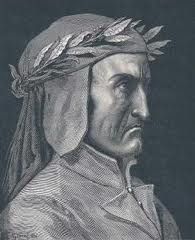
漢德百科全書 | 汉德百科全书
 Literature
Literature



Die Frühlings- und Herbstannalen (chinesisch 春秋, Pinyin Chūnqiū, kor. 춘추 Chunchu, jap. 春秋 Shunjū), weniger gebräuchlich ist dagegen die historische Bezeichnung Línjīng (麟經 / 麟经)[1][2], sind einer der Fünf Klassiker, die dem Konfuzius zugeschrieben werden.
Es ist allerdings unsicher, ob das Werk tatsächlich von Konfuzius selbst kompiliert worden ist.

Dadaismus oder auch Dada war eine künstlerische und literarische Bewegung, die 1916 von Hugo Ball, Emmy Hennings, Tristan Tzara, Richard Huelsenbeck, Marcel Janco und Hans Arp in Zürich begründet wurde und sich durch Ablehnung „konventioneller“ Kunst und Kunstformen – die oft parodiert wurden – und bürgerlicher Ideale auszeichnet. Vom Dada gingen erhebliche Impulse auf die Kunst der Moderne bis hin zur zeitgenössischen Kunst aus.
Im Wesentlichen war es eine Revolte gegen die Kunst von Seiten der Künstler selbst, die die Gesellschaft ihrer Zeit und deren Wertesystem ablehnten. Traditionelle Kunstformen wurden deshalb satirisch und übertrieben verwendet.
达达主义(Dada或Dadaism)是一场兴起于一战时期的苏黎世,涉及视觉艺术、文学(主要是诗歌)、戏剧和美术设计等领域的文艺运动。达达主义是20世纪西方文艺发展历程中的一个重要流派,是第一次世界大战颠覆、摧毁旧有欧洲社会和文化秩序的产物。达达主义作为一场文艺运动持续的时间并不长,波及范围却很广,对20世纪的一切现代主义文艺流派都产生了影响。




David Copperfield, (Originaltitel David Copperfield or The Personal History, Adventures, Experience and Observation of David Copperfield the Younger of Blunderstone Rookery (Which He Never Meant to Publish on Any Account)) ist ein Bildungsroman des englischen Schriftstellers Charles Dickens aus dem Jahr 1849/50.
Der Roman wurde zunächst, wie die meisten von Dickens’ Werken, als monatliche Fortsetzungsgeschichte mit je zwei Illustrationen von Phiz für einen Schilling konzipiert und später überarbeitet. Viele Elemente der Geschichte folgen Ereignissen aus Dickens’ eigenem Leben, David Copperfield gilt daher als der am stärksten autobiographisch geprägte Roman seines Gesamtwerkes. Dickens selbst bezeichnete David Copperfield als seine Lieblingsgeschichte.


Dante Alighieri [ˈdante aliˈɡi̯eːri](italienisch [ˈdante aliˈɡi̯ɛːri]; * Mai oder Juni 1265 in Florenz; † 14. September 1321 in Ravenna) war ein Dichter und Philosoph italienischer Sprache. Er überwand mit der Göttlichen Komödie das bis dahin dominierende Latein und führte das Italienische zu einer Literatursprache.

Das Daodejing (chinesisch 道德經 / 道德经, ![]() Dàodéjīng?/i) (ältere Umschrift: Tao Te King) ist eine Sammlung von Spruchkapiteln, die dem legendären Weisen Lǎozǐ zugeschrieben wird. Die Entstehungsgeschichte ist ungewiss und Gegenstand sinologischer Forschung. Ungeachtet weiterer Übersetzungen bedeuten Dào Weg, Fluss, Prinzip und Sinn, und Dé Kraft, Leben und Charisma, Tugend, Güte. Jīng bezeichnet einen Leitfaden bzw. eine klassische Textsammlung. Die beiden namengebenden Begriffe stehen für etwas Unaussprechliches, auf dessen eigentliche Bedeutung das Buch hindeuten möchte. Aus diesem Grund werden sie auch oft unübersetzt belassen. Das Werk gilt als die Gründungsschrift des Daoismus. Obwohl dieser verschiedene Strömungen umfasst, die sich von den Lehren des Dàodéjīng erheblich unterscheiden können, wird es von den Anhängern aller daoistischen Schulen als kanonischer, heiliger Text angesehen.
Dàodéjīng?/i) (ältere Umschrift: Tao Te King) ist eine Sammlung von Spruchkapiteln, die dem legendären Weisen Lǎozǐ zugeschrieben wird. Die Entstehungsgeschichte ist ungewiss und Gegenstand sinologischer Forschung. Ungeachtet weiterer Übersetzungen bedeuten Dào Weg, Fluss, Prinzip und Sinn, und Dé Kraft, Leben und Charisma, Tugend, Güte. Jīng bezeichnet einen Leitfaden bzw. eine klassische Textsammlung. Die beiden namengebenden Begriffe stehen für etwas Unaussprechliches, auf dessen eigentliche Bedeutung das Buch hindeuten möchte. Aus diesem Grund werden sie auch oft unübersetzt belassen. Das Werk gilt als die Gründungsschrift des Daoismus. Obwohl dieser verschiedene Strömungen umfasst, die sich von den Lehren des Dàodéjīng erheblich unterscheiden können, wird es von den Anhängern aller daoistischen Schulen als kanonischer, heiliger Text angesehen.
《道德经》是中国历史上最伟大的名著之一,对传统哲学、科学、政治、宗教等产生了深刻影响 。据联合国教科文组织统计,《道德经》是除了《圣经》以外被译成外国文字发布量最多的文化名著。
老子道徳経(ろうしどうとくきょう) は、中国の春秋時代の思想家老子が書いたと伝えられる書。単に『老子』とも『道徳経』(繁体字: 道德經; 簡体字: 道德经; ピン音: Dàodéjīng ![]() 発音)とも表記される。また、老子五千言・五千言とも。『荘子』と並ぶ道家の代表的書物。道教では『道徳真経』ともいう。上篇(道経)と下篇(徳経)に分かれ、あわせて81章から構成される。
発音)とも表記される。また、老子五千言・五千言とも。『荘子』と並ぶ道家の代表的書物。道教では『道徳真経』ともいう。上篇(道経)と下篇(徳経)に分かれ、あわせて81章から構成される。
The Tao Te Ching ([tâu tɤ̌ tɕíŋ] (![]() listen), Chinese: 道德经; pinyin: Dàodé Jīng),[a] also known as Lao Tzu or Laozi,[5] is a Chinese classic text traditionally credited to the 6th-century BC sage Laozi. The text's authorship, date of composition and date of compilation are debated.[6] The oldest excavated portion dates back to the late 4th century BC,[7] but modern scholarship dates other parts of the text as having been written—or at least compiled—later than the earliest portions of the Zhuangzi.[8]
listen), Chinese: 道德经; pinyin: Dàodé Jīng),[a] also known as Lao Tzu or Laozi,[5] is a Chinese classic text traditionally credited to the 6th-century BC sage Laozi. The text's authorship, date of composition and date of compilation are debated.[6] The oldest excavated portion dates back to the late 4th century BC,[7] but modern scholarship dates other parts of the text as having been written—or at least compiled—later than the earliest portions of the Zhuangzi.[8]
The Tao Te Ching, along with the Zhuangzi, is a fundamental text for both philosophical and religious Taoism. It also strongly influenced other schools of Chinese philosophy and religion, including Legalism, Confucianism, and Buddhism, which was largely interpreted through the use of Taoist words and concepts when it was originally introduced to China. Many artists, including poets, painters, calligraphers, and gardeners, have used the Tao Te Ching as a source of inspiration. Its influence has spread widely outside East Asia and it is among the most translated works in world literature.[7]
Le Dao de jing (chinois simplifié : 道德经 ; chinois traditionnel : 道德經 ; pinyin : ; Wade : Tao⁴te²ching¹ ; EFEO : Tao-tö-king, « livre de la voie et de la vertu »), parfois écrit Tao te king, est un ouvrage classique chinois qui, selon la tradition, fut écrit autour de 600 av. J.-C. par Lao Tseu, le sage fondateur du taoïsme, dont l'existence historique est toutefois incertaine1,2. De nombreux chercheurs modernes penchent pour une pluralité d’auteurs et de sources, une transmission tout d’abord orale et une édition progressive3,4. Les plus anciens fragments connus, découverts à Guodian, remontent à 300 av. J.-C. environ5 ; les premières versions complètes très semblables au texte actuel, provenant de Mawangdui, datent de la première moitié du IIe siècle av. J.-C.
Le Dao de jing a été classé parmi les textes taoïstes par les érudits6 de la dynastie Hann 1 et faisait partie des écrits sacrés des Maîtres célestes, qui divinisaient Lao Tseu. Pourtant, son lectorat n’était pas limité à un courant philosophique. Le fait que le premier à le mentionner et à le commenter soit le légiste Hanfei, et que les textes de Guodian semblent avoir été rassemblés par des confucéens7 en témoigne.
Le Dao de jing a eu une influence considérable en Extrême-Orient et en Occident à travers ses très nombreuses interprétations et traductions. En 1988, on en recensait 250 versions en langues étrangères8. Il n'existe pas de conclusion définitive quant à sa signification réelle. Selon certains, ce serait un recueil d'aphorismes provenant de plusieurs auteurs où on trouve des propositions contradictoires. D'autres au contraire y voient un texte cachant une cohérence profonde sous un style allusif et elliptique. En Chine, le texte a toujours été accompagné d'un commentaire. Par l'interprétation qu'ils suggèrent, ces commentaires ont contribué autant que le texte d'origine au sens de l'ouvrage et à sa place dans la philosophie et la religion.
Il Daodejing (道德經T, 道德经S, Pinyin: Dàodéjīng, Wade-Giles: Tao Te Ching «Libro della Via e della Virtù») è un testo cinese di prosa talvolta rimata, la cui composizione risale a un periodo compreso tra il IV e il III secolo a.C.
Il libro è di difficile interpretazione. A ciò si aggiunge il sospetto che le tavolette dalle quali era composto, mal rilegate, si slegassero frequentemente, in modo tale che blocchi di caratteri si mescolassero nel tramandarlo: da qui il sorgere di numerose questioni critiche e interpretative. Il testo permette di affrontare diversi piani di lettura e d'interpretazione.
L'opera è stata composta in una fase storica non ben delineata. Per secoli gli studiosi l'hanno attribuita al saggio Laozi (老子, pinyin: lǎozi), ma, in primo luogo, non vi è attestazione storica dell'esistenza dell'uomo, nemmeno lo storico cinese Sima Qian si dice certo del personaggio, inoltre il testo ha subito numerosi rimaneggiamenti sino al primo periodo Han (206 a.C.-220 d.C.). Tuttavia, l'esistenza del testo non è attestata prima del 250 a.C..
Il periodo tra il 403 a.C. ed il 256 a.C., chiamato degli Stati combattenti, fu un'epoca durante la quale i vari sovrani cinesi si dichiaravano guerra continuamente. Età violenta ma che, nonostante ciò, risultò essere l'apice della creatività del pensiero cinese. La tradizione racconta che Lao Zi decise di allontanarsi dalla corte Zhou perché, stanco delle lotte e del disordine, desiderava tranquillità. Partì con il suo bufalo ed arrivò al confine del suo stato dove venne fermato dal guardiano del valico, chiamato anche Yin del valico (关尹, pinyin: Guān Yǐn). Il guardiano riconobbe Lao Zi e gli disse che non poteva andarsene prima di aver lasciato un segno tangibile della sua saggezza. Fu in questa occasione che Lao Zi compose il Tao Te Ching. Finito di scrivere, Lao Zi se ne andò e di lui non si seppe più niente.
El Dào Dé Jīng (Chino: 道德經 ![]() pronunciación (?·i), Wade-Giles: Tao Te Ching, también llamado Tao Te King), cuya autoría se atribuye a Laozi (WG Lao Tzu, también trasliterado como Lao Tse, ‘Viejo Maestro’), es un texto clásico chino.
pronunciación (?·i), Wade-Giles: Tao Te Ching, también llamado Tao Te King), cuya autoría se atribuye a Laozi (WG Lao Tzu, también trasliterado como Lao Tse, ‘Viejo Maestro’), es un texto clásico chino.
Su nombre procede de las palabras con las que empiezan cada una de sus dos partes: 道 dào ‘el camino’, la primera del Capítulo 1, y 德 dé ‘virtud’, o ‘poder’, la primera del Capítulo 38, con el añadido 經 jīng, ‘libro clásico’. Según la tradición, fue escrito alrededor del siglo VI a. C. por el sabio Laozi, un archivista de la corte de la dinastía Zhou, por cuyo nombre se conoce el texto en China. La verdadera autoría y fecha de composición o de compilación del libro es aún objeto de debate.
Este texto es uno de los fundamentos del taoísmo filosófico y tuvo una fuerte influencia sobre otras escuelas, como el legalismo y el neoconfucianismo. Tiene un papel importante en la religión china, relacionado no solo con el taoísmo religioso, sino también con el budismo, que cuando se introdujo por primera vez en China fue interpretado usando en gran medida palabras y conceptos taoístas. En China la filosofía de la naturaleza y la visión del mundo están impregnadas del pensamiento taoísta y así muchos artistas, pintores, calígrafos y hasta jardineros han usado este libro como fuente de inspiración. Su influencia se ha esparcido también más allá del Lejano Oriente, ayudada por las muchas traducciones diferentes del texto a lenguas occidentales.
Дао дэ цзин (кит. трад. 道德經, упр. 道德经, пиньинь: Dào Dé Jīng, звучание , «Книга пути и достоинства») — основополагающий источник учения и один из выдающихся памятников китайской мысли, оказавший большое влияние на культуру Китая и всего мира. Основная идея этого произведения — понятие дао — трактуется как естественный порядок вещей, не допускающий постороннего вмешательства, «небесная воля» или «чистое небытие». Споры о содержании книги и её авторе продолжаются до сих пор.


 Art
Art
 Music
Music
 History
History
 Religion
Religion
 Review
Review